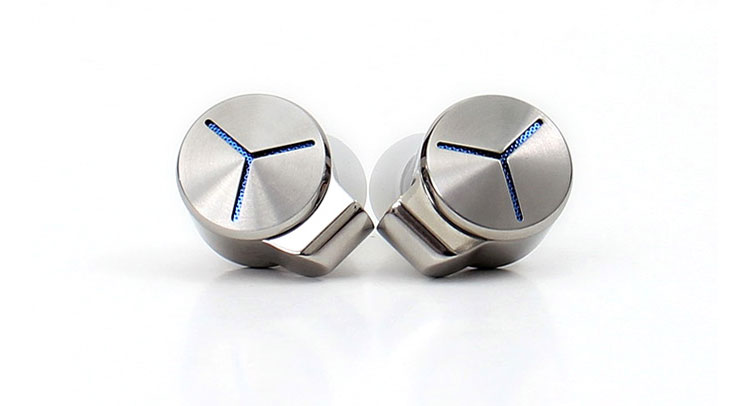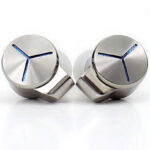The FiiO FA7S is a new 3rd gen industrial design universal IEM housing six balanced armature Knowles and custom drivers. It is priced at $339.99.
Disclaimer: The FiiO FA7S sent to us is a sample in exchange for our honest opinion in this review. We thank FiiO for this opportunity.
To learn more about FiiO reviews on Headfonics you can click here.
Note, this 2-page review follows our new scoring guidelines for 2021 which you can read up on here.
Apparently, it seems FiiO is trying to encapsulate every particular audio taste ideology with their FD and FA IEM product line, and to be honest this is where the market is taking us. This fact is also being driven by our own desires and likes since the perfect IEM or headphone doesn’t exist yet.
When we speak of FiiO IEMs everyone speaks of the awesome bass of some FiiO IEMs like the FD7 while others about the highs but not many speak of their midrange or detail production except for some isolated pockets of hardcore buyers and ardent fans of the FiiO brand.
Currently, I’m on a discovery path as to where the FA7S belongs in their already large lineup since I did not review the original FA7. However, I have a feeling I know where I need to go with this particular IEM and that is right down the middle.
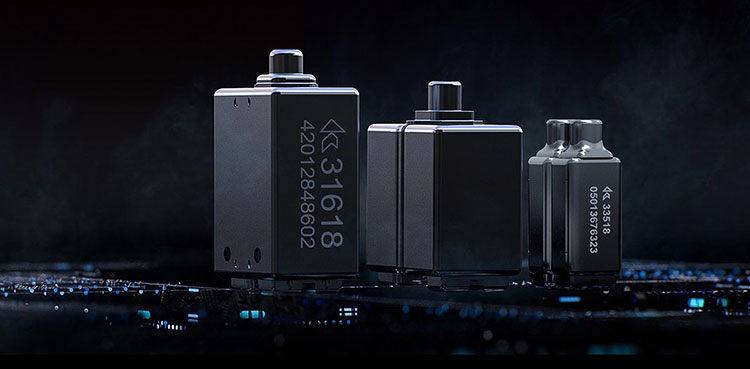
Tech Highlights
If you look at the FiiO FA line’s shell design such as the FA7 and FA9, the FA7S does not fit the line profile visually. Internally, they do in the fact that they all use a balanced armature driver system. Like the original FA7, this s a six-driver BA setup configured in a 2+2+2 formation and joined together with an advanced 3-way crossover system.
A pair of Knowles HODVTEC 31618 balanced armature drivers handle the bass frequencies, two 33518 BA drivers handle the highs while a couple of custom BA drivers sit center stage and handle the midrange.
Those mystery BA drivers seem to be the secret sauce in this dish and you probably caught the previous breadcrumb about going down the middle. All six BA drivers are directed forward by individually tuned port tubes and the entire driver array is vented thru the rear technically making this IEM a semi-open back design.
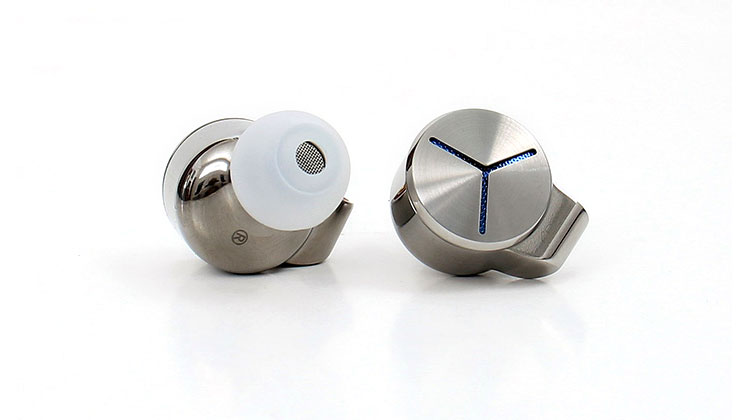
Design
Speaking of the semi-open back design, this particular shell design FiiO labels it their third-generation industrial design and is a similar form factor to the FD5. It still carries over the familiar cylinder shape with an angled output nozzle and the angled MMCX connector. It seems the only major change is the backplate design pattern and venting.
The FA7S shells were made from 316L medical grade stainless steel, PVD electroplated with a mirror finish, and polished by hand.
The shell shape is obtained by a process called Sintering which heats the metal to a point where it gets soft enough to mold the metal but not hot enough to melt the metal which tends to weaken the metal structurally.
The faceplate is made with a five-point CNC machine with a new design that incorporates a Y shape with a color mesh. The color depends on what color you choose because the FA7S is available in either a silver or black gold theme.

Comfort & Isolation
I have no complaints with comfort and I think it’s due to the fact that the inner shell barely touches my inner ear. Weight is not so much of an issue either. Their size is not too bad and I would consider them rather small to a medium size and not too bulky.
You would think an IEM made of stainless steel would be very heavy but it’s not so, or not so bad. They are rather hefty at 8.4g each earbud but with not much girth so you don’t feel their weight much while you have them on.
The best part of all is that the FA7S isolates way better than the average IEM. In fact, to me, they do better at outside noise isolation for some reason compared to FiiO’s own IEMs that have the same and almost identical industrial design.
Tips
Comfort and isolation are very good but the FA7S seems to be extremely sensitive to tip selection. I must have spent countless days looking for a perfect fitting tip size that would completely seal because if you do not obtain a good seal you will get no bass whatsoever and the general tonality will sound anemic.
I actually settled at the end with the tips that came preinstalled which is funny. Of all the FiiO IEMs I personally have, for some reason they all basically came with the ideal tips preinstalled for my ears.
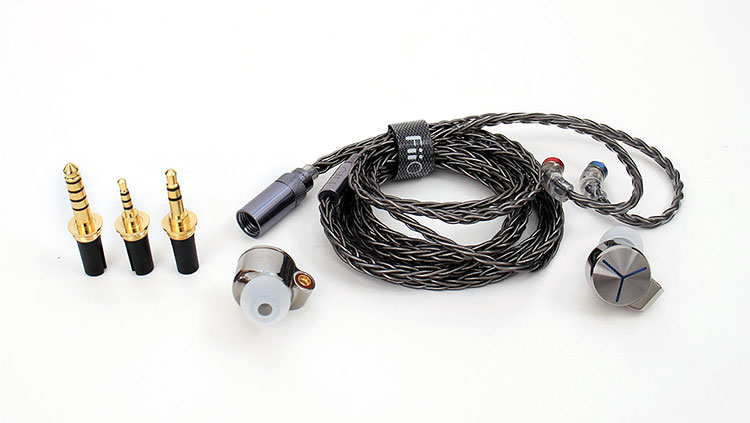
Stock Cable
The stock cable is rather nice I must say and it’s made with high purity silver-plated Monocrystalline copper wire in a Litz braid. Each wire has a total of 19 strands with a total of 8 wires which gives us a total of a 152 strand count.
The braid starts off as an 8 core braid and works its way up to a 4 core braid for each side up top. All the hardware is made of polished metal. The centerpiece is FiiO branded while the MMCX plugs are angled for better comfort plus are color-coded for a quick and easy visual ID.
Aside from the wire’s ability to absorb nasty cable-induced mechanical noise, the part I like best is the swappable tip system which beats dongles and adapters hands down. The tip system is licensed and by a company called FABRILOUS.
There are three tip sizes you can choose from which all come included in the box. The three sizes are the conventional 3.5mm TRS, a 2.5mm TRRS, and a 4.4mm Pentaconn so out the box you can go single-ended or balance and this eliminates the need to source out another wire for different gear.
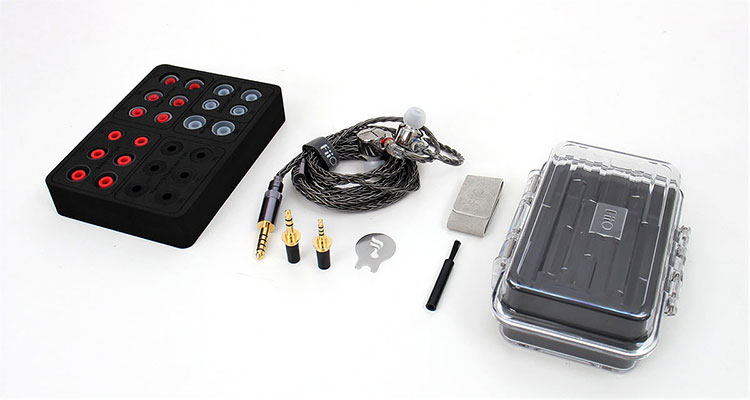
Packaging & Accessories
The box is the typical FiiO package and it gets no complaints from me as it seems elegant, efficient at protecting the contents plus it’s well presented.
Everything comes within custom foam molds, everything from the IEMs to the variety of tips that come with the FA7S. Speaking of tips you get a total of thirteen sets all with different sonic characteristics.
The storage case was changed over from their usual leatherette box. The FA7S comes with a FiiO branded clear top Pelican case. The other accessories are an MMCX tool, a leather wire strap and a mini brush.
Sound Impressions
Summary
Okay, a neutral, warm-sounding IEM with an all BA driver array is very interesting indeed. Once you jump the hurdle of finding the right tips the FA7S greets you with a warm bottom end, a bright top end, and a very nice midrange section.
But the signature should not be mistaken for a V or U-shaped signature because there is plenty of balance here along with a high level of micro-detail which is what I think the FA7S does best.
Frequencies seem rather flat until I ran my usual tone sweep test and I heard some peaks at around 5kHz and also at 7kHz but further out it seemed flat past those frequencies all the way out to the top frequencies. I heard these go past just below 17k before dropping output so I would say there is a very good high-frequency extension.
The bass is a different story. The bass seems relatively flat in listening tests but the tone sweep showed a gradual and constant dip which starts right below 45Hz.
Bass
Although the bass response is rather warm and pleasing to listen to in general it might not please the average bass head because they will not give you lots of slam and punch. What it does give you is a clean bass response that reproduces every note distinctly.
The bass is plenty fast, tonality is accurate, but to me, I prefer more body and definitely more impactfulness. Midbass slam is somewhat present but the bass region is best with for example Jazz tunes or music that does not need lots of visceral energy in the lowest frequencies.
Midrange
The bass BA drivers are off-the-shelf reliable and known good-sounding drivers and so are the high-frequency units but the two balanced armature midrange drivers have some special virtues and not surprisingly since they are the only two custom drivers in the pack. Perhaps FiiO should start making balanced armature drivers and use them exclusively.
Why? Because these drivers to me produce the best virtues the FA7S have. The midrange is not only smooth, well-toned, and controlled but the production of nuances and micro-detail production is very high and these IEMs are the type of IEM that has one often saying “I’ve never heard that before.
First off, the tonality is realistic except for a small amount of girth, especially in male vocals. The midrange is somewhat pushed back but not in volume and only in position and it’s never in your face or too vigorous but quite polite in its presentation.
The frequency response of the midrange seems even from the lower portion to around the 5 kHz region where those peaks occur and at times causes some harshness which jumps into the high frequencies but only at high volume levels.
Treble
The treble response is alive, present, with lots of shimmer, and remains rather balanced with the rest of the spectrum but it still hits borderline before the driver starts losing control and becoming harsh sounding at high volume levels but to me, that is a common characteristic of most BA tweeters. To their merit, they were designed to be played at moderate volume levels anyway.
These BA drivers were the same ones used on the FH1s which is an IEM from their hybrid line and if you turn up their volume some harshness can occur. However, what FiiO did was use two and split the load.
While not a perfect solution, the split load means you can go louder with less harshness and it worked. These combo tweeters sound sharp, airy, and image very well while remaining well balanced with the rest of the spectrum.
Soundstage
According to FiiO’s literature, each driver array inside the FA7S was chosen for their specific frequency range and isolated from each other and the result can be heard in the staging particularly.
Each array seems to portray sound in different directions but in different ways. For example, the high frequencies could project sound all over the place and in all plains while the bass remains centered with a touch of width.
The best part of the imaging is actually found in the upper-frequency regions. The high frequencies can project far away or nearby. The midrange section is also wide but remains within a smaller inner parameter but still projects good depth, width, and height.
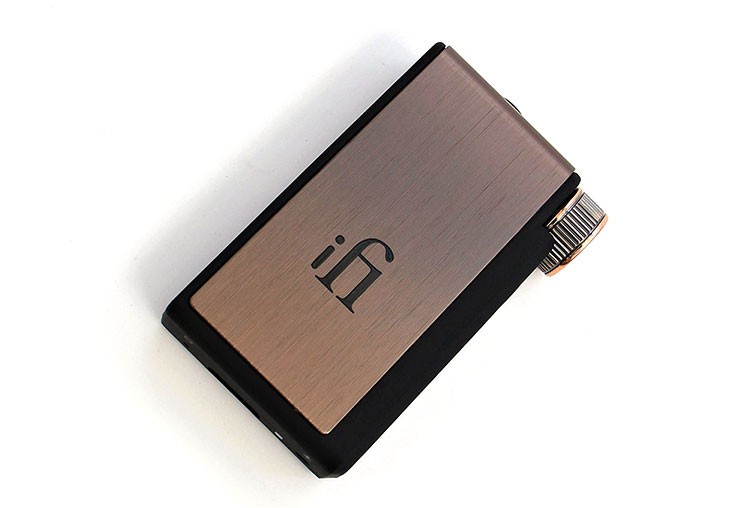
Synergy
The FA7S absolutely hated my Diablo, not so much for clarity but in power output and harshness. The funny thing is as I scale down to the iFi Audio hip-dac2, things get much better. The kicker was that it preferred the GO blu when used as a USB-DAC amplifier combo.
Then I stepped into some micro DACs and the results were somewhat disappointing. There seems to be a loss in soundstage size and everything seemed to narrow down closer to the listener. So, to summarize I think the FA7S are best used with a moderately powered device with a good DAC chip.
Power and Efficiency
One of the things I like about the FA7S is that although they have a high sensitivity rating of 111dB and an impedance of 18Ω, they seem to be free of hiss with practically every amplifier I plugged them into.
The sensitivity is high so there is no need to use a high-powered device with balanced armature drivers and they tend to overload easier compared to a dynamic driver which depending on design benefits from more voltage and higher wattage.
I would keep the FA7S close to FiiO’s maximum power rating of 100mW or perhaps a bit higher as long as you feed them clean power with good sources.
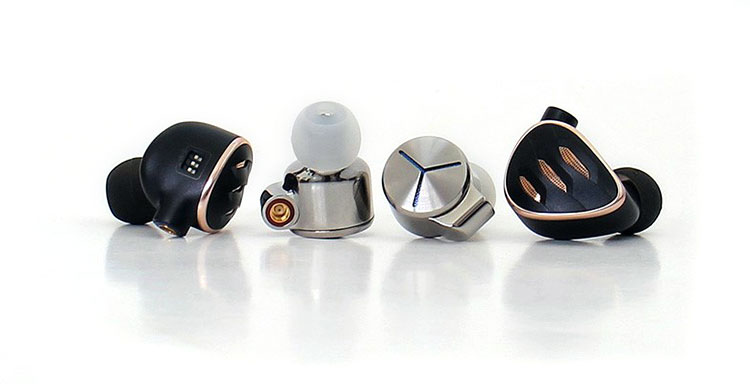
Select Comparisons
FiiO FH5s
Price $279
Technical
This IEM surely puts a totally different spin on things from FiiO but at a somewhat similar tier, the hybrid FH5s has a total of four drivers in a rather unique configuration consisting of one 12mm dynamic, one 6mm dynamic, and a stack of 30017 Knowles BA tweeters.
Although both are similarly priced. The only changes in packaging and accessories that I would consider major was the storage case and to be honest, I liked the leatherette FiiO case more because to me Pelican cases are a dime a dozen, and the FH5s case was more visually appealing in my opinion.
Design
The FH5s use what FiiO calls a Tri-shell design made in a five-axis CNC just like the FA7S but one cannot mistake them visually, no way. The Tri shell design consists of three sections that together form a shell that is resonance and distortion resistant according to FiiO.
Instead of variable tuning done by swapping output tubes, this particular IEM uses a total of three dip switches to attenuate 3 sections of its tonality. I personally liked the switches in the 1-2-0 setting, in other words, the first two in the upper position and the T switch in the lower position to keep the treble attenuated.
The rear faceplate with the dragon scale pattern of the FH5s was designed to not only look good but to relieve pressure inside the shell. I did run into some strange shrieking and crackling noise with the FA7S while moving the IEMs into position and into the ear but it seems to go away and they seem to settle in time.
Performance
The first thing you will run into with the FA7S is how finicky they are with tip selection but not so much with the FH5s. You can use almost any tip style and get that solid bass response. The FH7s have a good amount of bottom end and slam. The FH5s are ear definitely ticklers for certain.
My personal preference for bass is deep, heavy, and tight. Both these IEMs have a good low end but are done differently. I do prefer the FH5s for bass because of the increased impactfulness.
The midrange is a different story because the FH5s have a forward midrange and the FA7S seems to push back the midrange but only in distance and not in volume. However, there is way more detail produced by the FA7S and the midrange seems warmer as well.
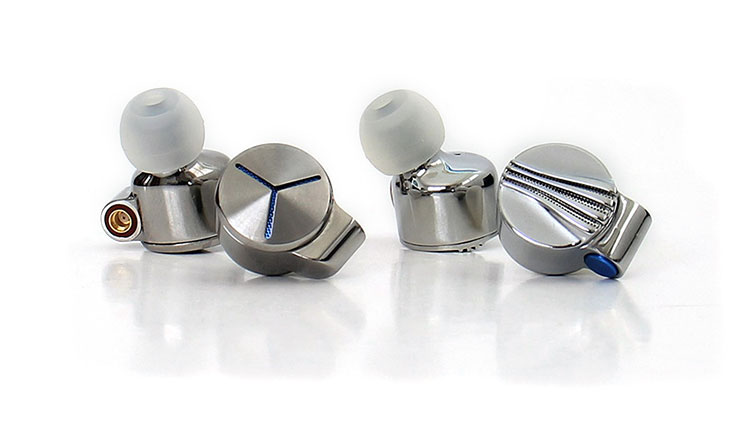
FiiO FD5
Technical
Do not look at these and think they are alike because they are not. These two IEMs seem to be cut from the same cookie cutter and look similar but just on the outside. Internally they are two different animals.
The Beryllium coated single dynamic DLC driver is the single source of sound for the FD5 and there is no crossover circuitry inside. However, these have some features that the FA7S does not have.
The FD5 puts a different spin on sound tuning from the other two and includes output port tube swapping capability to alter the sound signature which adds versatility to this model.
Design
What other differences in design and features lie between the two? Although the shells look almost identical the FD5 has that front acoustic prism and the rear volcanic system implementation which helps to control the cone motion of the dynamic driver.
The FD5 backplate has a different design and is more open back and it seems to help driver vent which usually raises efficiency and also improves low-end response similar to a ported speaker cabinet design.
The stock cable on all these FiiO models uses the FABRILOUS tip system and you get the same three tips. But I personally preferred the wire that came with the FA7S over the others for a few reasons like the nicer-looking Litz braid which is an eight-core versus the four-core wire of the FH5s for example.
Performance
The FA7S sounds warm and the FD5 contrasts that with a Harman response curve-oriented tuning but it still has a few peaks. The FiiO FD5 kind of reminds me of those old-time big box Klipsch horn type, big bass driver speakers with large horn drivers and super extraordinary efficiency.
The high frequencies for example truly drop off the map above 15kHz just like some old vintage horn tweeters but on occasions that horn-like character can be just the right character you need for certain genres.
The midrange is fairly wide and open plus there’s more midrange presence and forwardness on the FD5. However, it does lack some of the micro detail and nuanced background sound reproduction capabilities of the FA7S.
The bass response, similar to a vintage cabinet, starts to sharply drop off in output at 24Hz. None the less the FD5 can go lower but the FA7S can do detail the best of the three.
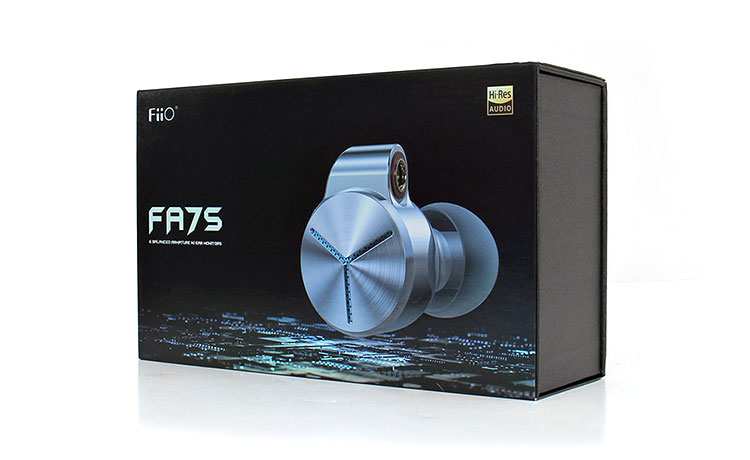
Our Verdict
The FiiO FA7S is a delicate listen that needs attention and some discovery and once you find the right tips you are rewarded with a warm, balanced sound signature that will please those that are looking for a soft-mannered and very revealing character.
These IEMs are not the kind you rock out to or listen to Hip Hop, Rap, or EDM with and expect head pounding bass but soft Rock, Jazz, acoustic ensembles, and music with lots of vocals are best on the FH7s and generally music that needs good resolution and good clarity in the midsection.
So, I would consider the FiiO FA7S a good buy if you want a soft character, warm bass, a nice midrange response with an ability to produce nuances and detail in a well-thought-out package.
FiiO FA7S Technical Specifications
- High-Performance Knowles BA drivers.
- Precise three-way frequency crossover.
- Premium 316L Stainless Steel ear cavities.
- 3rd-generation industrial-grade design.
- High-purity silver-plated monocrystalline copper cable.
- Angled MMCX connectors for firm connection.
- Twist-lock swappable termination plugs.
- Hi-Res audio certified.
- Impedance: 18Ω.
- Sensitivity: 111dB/ mW.
- Frequency response range: 10Hz-40 kHz.
- Weight: About 8.4grams.



